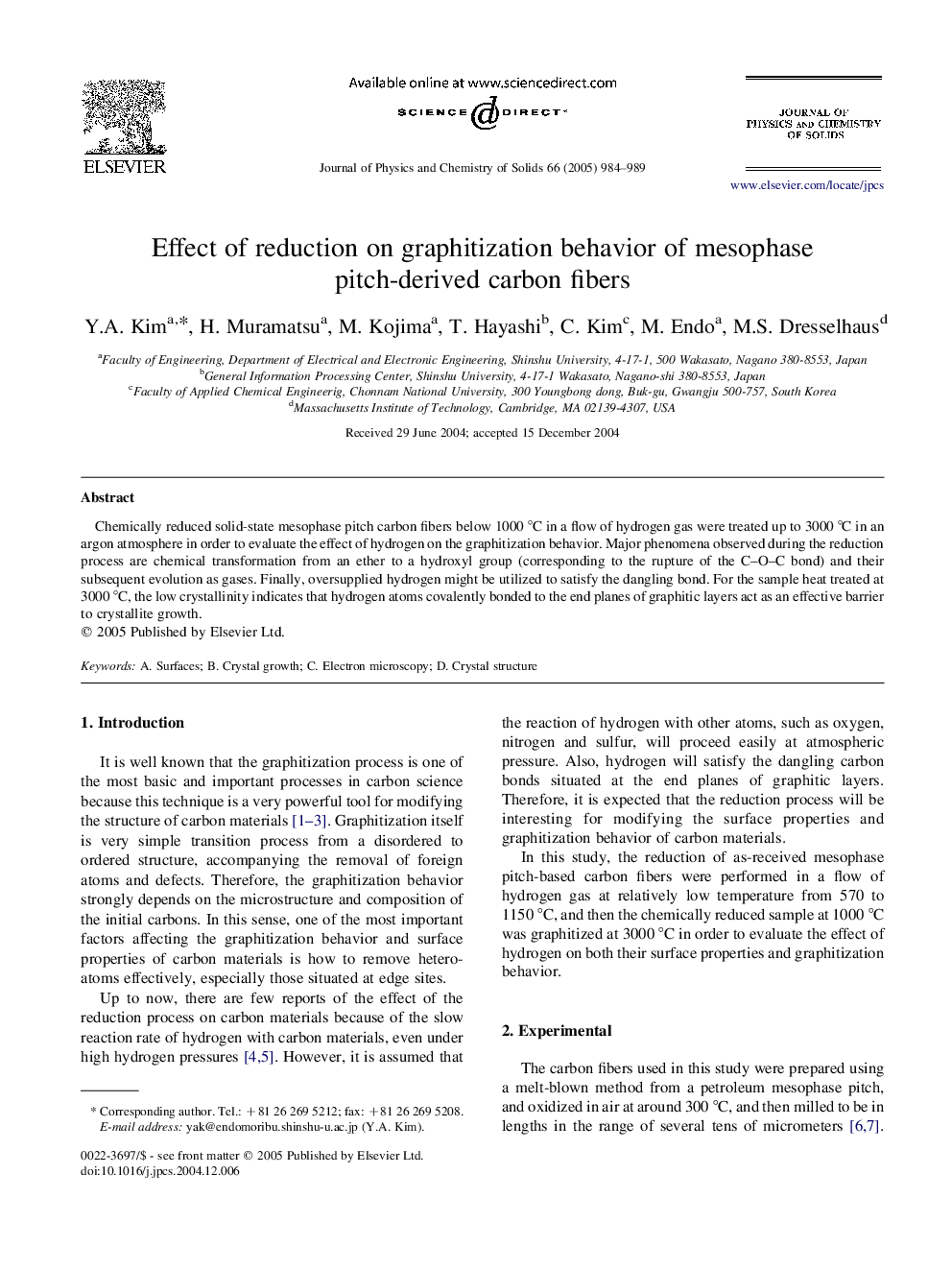| Article ID | Journal | Published Year | Pages | File Type |
|---|---|---|---|---|
| 9781695 | Journal of Physics and Chemistry of Solids | 2005 | 6 Pages |
Abstract
Chemically reduced solid-state mesophase pitch carbon fibers below 1000 °C in a flow of hydrogen gas were treated up to 3000 °C in an argon atmosphere in order to evaluate the effect of hydrogen on the graphitization behavior. Major phenomena observed during the reduction process are chemical transformation from an ether to a hydroxyl group (corresponding to the rupture of the C-O-C bond) and their subsequent evolution as gases. Finally, oversupplied hydrogen might be utilized to satisfy the dangling bond. For the sample heat treated at 3000 °C, the low crystallinity indicates that hydrogen atoms covalently bonded to the end planes of graphitic layers act as an effective barrier to crystallite growth.
Related Topics
Physical Sciences and Engineering
Materials Science
Electronic, Optical and Magnetic Materials
Authors
Y.A. Kim, H. Muramatsu, M. Kojima, T. Hayashi, C. Kim, M. Endo, M.S. Dresselhaus,
